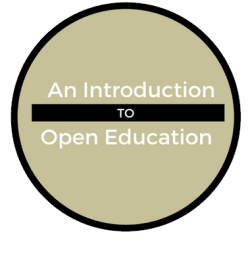As MOOCs continue to evolve through business strategies, design teams are lacking formal and informal spaces to share best practices for MOOC design. Why are design teams not communicating their process, analysis, design and lessons learned?
Typically, I enroll in at least one MOOC per year to get inspired about asynchronous, distance learning design. Not only does it provide me with an opportunity to be in the student seat, but it also exposes me to a community of knowledge and fresh perspectives. Also, it affords me a chance to see what types of technologies and design elements are used to deliver information and motivate students to completion. I can honestly say that I have taken 6 MOOCs since 2013 and successfully completed 5 of them. Recently, I have taken a MOOC with a two friends to study the effectiveness of MOOCs as a model for professional development. We have shared many reflective discussions about the MOOC, but one thought that keeps circling around my brain is the absence of openness in MOOC design.
Based on my experiences, academic articles and my scope as an instructional designer, I have compiled a list of MOOC design recommendations.
- Know Your Audience.
- Cast a large net to understand who your prospective learners and their needs, motivations, and interests.
- For example, if your target audience is PreK-12 educators, would you launch a MOOC in the summer?
- Conduct a Needs Assessment.
- Survey prospective learners to meet learning gaps.
- Determine if your course will be teacher-centered or learner-centered.
- For example, is the course author guiding content design because they are a super-star in the field? Will people enroll in this course only because the course author is highly regarded in the field?
- Utilize Data to Drive Course Design.
- Establish a relationship with an Instructional Designer or Design Team.
- Develop learning objectives supporting the needs and expectations of prospective learners.
- Design assessment on learner’s needs and interests.
- Peer Review activities are very constructive for demonstrating knowledge and authentic application.
- Quizzes and Summative Assessments are well suited for competency-based learning outcomes.
- Academic literature supports problem- and project-based learning in MOOCs
- Social learning opportunities within the learning platform to support collective-knowledge and communication.
- Incorporate design elements including high-quality and professionally developed resources.
- Videos are extremely common in MOOCs and require thoughtful production to keep learners engaged.
- Design for diversity.
- Include rubrics to ease grading expectations and to guide peer-to-peer activities.
- Determine the length of the course and anticipated hours of learning per lesson/week.
- Assess the quality of the learning design and student outcomes through an iterative design process.
- Monitor and gather social media activity, learning platform analytics, video and media data, and assessment data.
- Offer a mid- and/or end- of course survey.
- Engage in Human Interactions.
- Utilize Social Media platforms, especially blogs, Twitter and Facebook groups.
- It creates content development, community, sharing, and helps to ensure that learning is more than a one-time event.
- Show visible support through personalized course announcements and discussion forums from the course instructor and/or TAs.
- Utilize Social Media platforms, especially blogs, Twitter and Facebook groups.
- Share and Evolve as a Community.
- Keep the communication flowing to the learning community through social media platforms and end of course email announcements.
- Share course findings for other MOOC design teams, the OER community, and academic literature.
Have you designed a MOOC or enrolled in a MOOC that made you reflect on the design? What are some best practices or recommendations for MOOC design to share for the greater good? I look forward to hearing from you!

